How To Practice Kicking Field Goals
Practice can be tough as a kicker. It’s a lonely enough to practice by yourself in-season when your teammates are often on another part of the field or on another field all together.
![]() However, practice in the off-season (especially during the summer) can be down right dreadful. There are other ‘fun’ things to do, and sometimes kicking over and over can become mindless and unproductive.
However, practice in the off-season (especially during the summer) can be down right dreadful. There are other ‘fun’ things to do, and sometimes kicking over and over can become mindless and unproductive.
You make one, miss one, whatever….time for the pool or another video game. That’s if you even make it to the field in the off-season. Some kickers can go weeks without a single practice session.
Those kickers who kick too much in a session aren’t much better off. At least they are kicking, but often they can end up staying out for way too long, kicking way too many footballs. This can leave them frustrated and miserable, dreading the next practice session.
The frustration that can result from kicking with a tired leg can result in swing modifications and poor consistency. Not to mention the mood state that comes with a poor kicking session in general.
No matter the practice schedule for your off-season kicking, the one thing every young kicker has is time to practice (in one form or another.)
Some kids have jobs, other sports or family responsibilities that may create challenges with the amount of time, but the time should be there if prioritized. You can always find some time to get better with your kicking. I’m going to show you how with a simple piece of paper.
Track Your Kicking To Make Big Gains!
Kickers all practice with focus when the coach is watching, but it can be tough when the only other set of eyes on your kicking session is the occasional passing bird.
The trick to being more productive with your kicking is actually pretty simple. Set a goal for each session, and track your kicks. At least, track a portion of your kicks each practice session. In fact, I’d only track about 10-20 kicks out of the 60-80 you might kick in any given session (please don’t ever kick 200 footballs in one practice!)
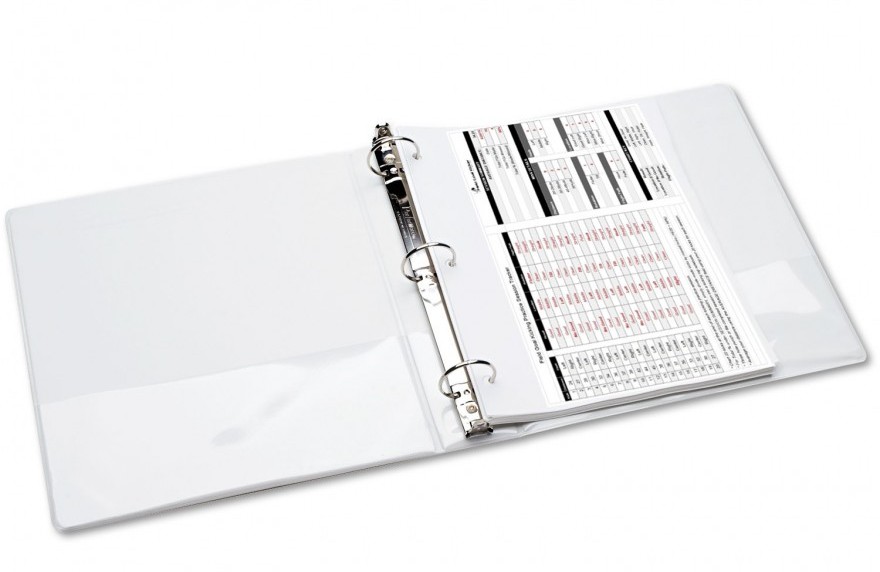 I know we are in the digital age with phones and apps, I’m in the middle of all that technology myself. However, to make this off-season practice tracking more of a visual and tangible thing for you, I’m going to suggest that you grab a three ring binder and start tracking your kicks using the FREE template I’ve created for you.
I know we are in the digital age with phones and apps, I’m in the middle of all that technology myself. However, to make this off-season practice tracking more of a visual and tangible thing for you, I’m going to suggest that you grab a three ring binder and start tracking your kicks using the FREE template I’ve created for you.
If you have your tracking notebook with you, you won’t even need it until you are ready for your tracking session. Again, we are only talking about 10-20 kicks max so buckle down and FOCUS for your tracking session. Setup the kicks you want to take before each session, and then plan on tracking one focused set of kicks either at the end of your practice time.
If you are going to work kicking drills for 20 minutes, save some time after that for a tracking session. Knowing that you are going to be under the gun in 20 minutes to perform for your tracking notebook should help you focus on the drills you work in the first half of your session.
Tracking our kicking does a couple of things. First off, tracking slows the pace so that you aren’t rushing through kicks mindlessly. You kick, you record the results (rotation, location, flight path, etc) and then move to your next kick. I see way too many students kick so fast that they skip over the details and down the rabbit hole of frustration as a session gets worse and worse.
 Secondly, over the course of a few weeks, your tracking notebook will reveal a whole bunch about your kicking you never probably never knew (or paid much attention to.) Knowing your kicking tendencies will shed some light on the types of drills you need to focus on for your next session. Are you pushing most of your kicks? Are you kicking a straight line flight path but with lots of ‘flutter’ ball rotations? Do you seem to pull/hook kicks outside a certain range or from a certain hash more often than not?
Secondly, over the course of a few weeks, your tracking notebook will reveal a whole bunch about your kicking you never probably never knew (or paid much attention to.) Knowing your kicking tendencies will shed some light on the types of drills you need to focus on for your next session. Are you pushing most of your kicks? Are you kicking a straight line flight path but with lots of ‘flutter’ ball rotations? Do you seem to pull/hook kicks outside a certain range or from a certain hash more often than not?
Lastly, knowing that you are kicking to beat a personal best each and every session keeps you excited about getting out to the field. The more focused sessions you kick, the more you will develop your timing too.
All will be revealed over time if you just learn to practice with purpose. Then work to correct your problem areas and make your next practice truly count for something! By kicking each session with a mini-goal in mind (let’s shoot for 90% accuracy inside 35 yards today for instance), it makes a kicking session MUCH more interesting. You’ll have all of this information and actually look forward to recording it once you get used to being accountable for your kicking!
It’s About Time (well, timing)
Why am I, well past my kicking ‘prime’ as a kicking coach, still able to kick 50-55 yard field goals without any thought to distance or added effort? I’m certainly not in a weight room ripping out squats and power cleans with football teammates the way my kicking students are. It has to do with timing and technique served up with a dash of muscle memory (from lots of focused reps).
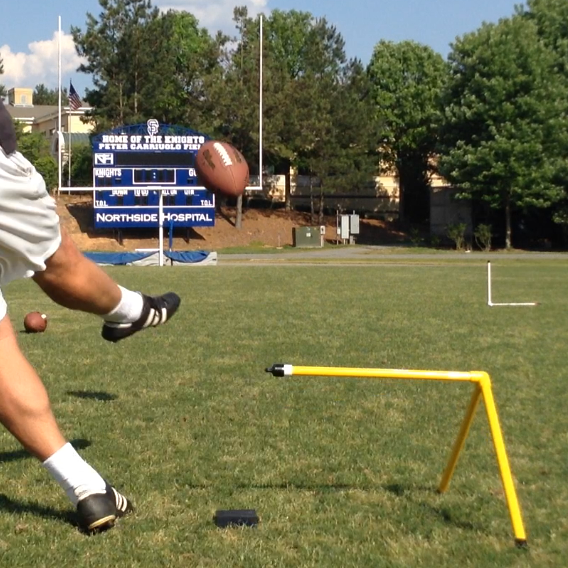 Kicking is definitely a timing/technique thing. Proper timing yields better kicking results. Better results yield more kicking confidence. More confidence brings a kicker right back around to that relaxed, consistent swing that optimizes the timing components we are working to develop in the first place.
Kicking is definitely a timing/technique thing. Proper timing yields better kicking results. Better results yield more kicking confidence. More confidence brings a kicker right back around to that relaxed, consistent swing that optimizes the timing components we are working to develop in the first place.
Like practicing anything from piano scales to typing on a keyboard, the more focused the practice repetitions the better. However, there does actually need to be a series OF repetitions TO get better.
Poor timing on hip alignment can cause kicks to stray left or right. Poor timing with leg extension at impact can cause loss of distance even if the kick is relatively straight and between the sticks down field.
Body and arm efficiency is factor that can cost a kicker distance on field goals, punts and kick-offs. Poor arm movement (or lack of arm movement) can cause a kicker to use too much leg, to swing harder than needed for the same result he could otherwise generate at 80-90% of his maximum effort.
The harder the swing, the more difficult it is to produce a consistent result with contact and finish.
To Master A Kick Swing, Master The Swing Parts
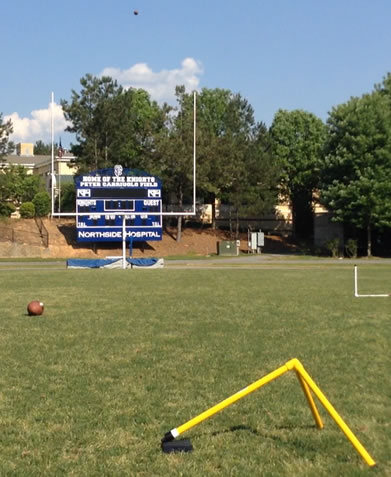 Since most young kickers just head to the practice field to ‘kick’ without any thought to these individual pieces that make up a swing, they can feel like they are spinning in place.
Since most young kickers just head to the practice field to ‘kick’ without any thought to these individual pieces that make up a swing, they can feel like they are spinning in place.
They often kick for way too long during a session (kick to exhaustion and finish with sloppy execution) and they don’t kick often enough to measure any real progress between sessions.
When I work one on one with a student, the first thing I do is to take note of inconsistencies and inefficiencies in a kicker’s setup, swing and finish. We work to break those three phases of a kick into smaller parts, easier to digest.
Together, we:
- Find the optimal configuration for that kicker based on body type, flexibility, comfort level and understanding
- Implement drills/exercises to build focus into specific areas for improvement
- Measure/chart results to build on over time (create a baseline)
It’s much easier for a student to master parts than the whole kick. However, once they are comfortable mastering the parts, it’s amazing how the kick itself improves over time.
Practice With A Purpose, Set Goals For EVERY Session
Learning how to practice ‘with purpose’ is half the battle to improve as a kicker (or anything else). A goal during a kicking session could be to ‘make all my kicks over 40 yards’ today. Maybe a kicker can accomplish that, but it’s more likely that they can instead focus on a piece of the kick that day.
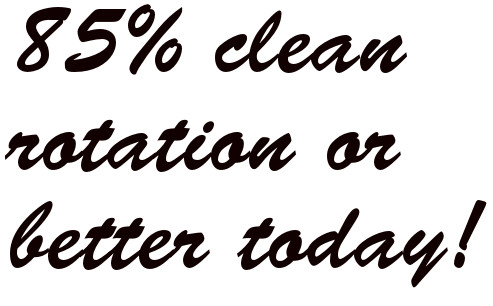 For instance, learning where to look (and why) on your back steps during setup is something most students don’t think about at all.
For instance, learning where to look (and why) on your back steps during setup is something most students don’t think about at all.
They might look here this kick and there the next, but those inconsistencies can easily lead to bigger headaches if not addressed, like missing field goals!
We train to create very specific movements that are efficient and easily replicated (once burned into the brain) in every aspect of our kicks.
Research psychologist Anders Ericsson calls this type of practice ‘deliberate practice’ and it jives with everything I’ve been telling my kicking students for years now. The idea for developing/mastering most any skill is that by setting goals during practice (practice itself is for some the end goal), practice can be more fruitful and productive.
Practice In Short, Effective Bursts To Achieve Results
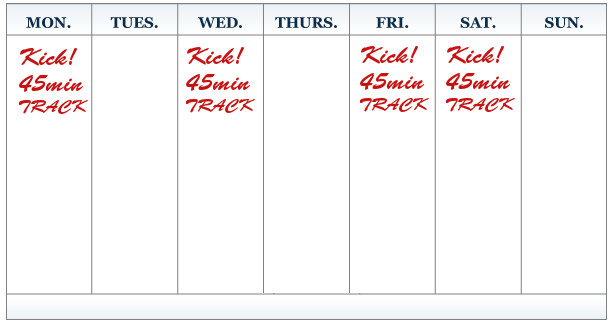 I like kickers to focus on quality over quantity during practice. Kick more often (more frequent sessions), but for less time each session (cut out mindless repetitions, focus on goals within a practice) on average while the leg is fresh. I often mention that the brain has a tendency to ‘reset’ overnight. With each reset, more information is stored long term.
I like kickers to focus on quality over quantity during practice. Kick more often (more frequent sessions), but for less time each session (cut out mindless repetitions, focus on goals within a practice) on average while the leg is fresh. I often mention that the brain has a tendency to ‘reset’ overnight. With each reset, more information is stored long term.
With each new kicking session, the details from the previous sessions begin to gel with less and less active thought. As we actively focus on mastering the individual parts of a kicking swing, we are shaping the full kicking swing over time with newfound confidence.
Instead of kicking two hours sessions two days a week, try one hour sessions four times a week (try something like Monday, Wednesday, Friday, and Saturday or Sunday as a fourth.)
Warm up for 10-15 minutes, then shoot for 45 minutes or an hour (depending on how many footballs you have to work with) or so to work some drills and get your tracking/logging session in at the end.
Finish Your Kicking Session With A ‘Test’
No one likes tests unless they are prepared for them, then they can be fun. When we practice in anticipation of some event that ‘counts’ (like a charting session for instance), we invite focus into our kicking practice session.
Think of each kicking session as a mini study session with an evaluation at the end to help stay focused. Never kick blindly with no purpose at all. Always be aiming at a target, be accountable for a result that can be measured over time. Develop good practice habits now and take them with you off the field as well for the rest of your life!
Start and Work A 90 Day Kicking Program
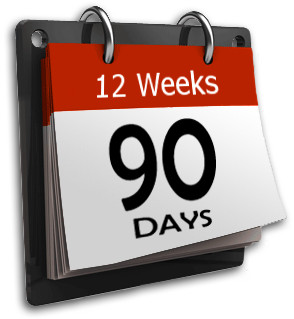 I would recommend three primary things to focus on over the next 12 WEEKS. Why 12 weeks? Mentally speaking for showing gradual improvement, a week is the in-season cycle (games each week). There are roughly 3 months in a typical college football season. There are approximately 9 months in the off-season which leaves enough room to run at least 2 solid 90 day, focused kicking programs from start to finish.
I would recommend three primary things to focus on over the next 12 WEEKS. Why 12 weeks? Mentally speaking for showing gradual improvement, a week is the in-season cycle (games each week). There are roughly 3 months in a typical college football season. There are approximately 9 months in the off-season which leaves enough room to run at least 2 solid 90 day, focused kicking programs from start to finish.
Thinking in terms of a training cycle, 12 weeks is a good time to both initiate and measure a kicking program for improvements. The key word again is ‘measure’ because without this critical piece, you’ll have no way to measure progress. That progress is what is going to motivate you to get to the field and set new personal bests with your kicking.
- Create a baseline from which to start.
What is your longest kick? Are you more accurate from the right hash or the left? How many kicks can you make in a 16 kick session averaging 38 yards? What about a longer, more challenging set of kicks that average say, 45 yards? Similar to a weight lifting/training program, you’ll need to set the bar and the weights low to start, then build as your strength increases. Also, like a strength program in the weight room, we’ll want to measure EVERYTHING you do so that you get to know your kicking like never before. - Kick regular, shorter sessions.
The brain resets, the legs reset, the sessions are more productive and leave kickers feeling better about their workouts. Think about 45 minute sessions 4 days a week rather than 2-2.5 hours on the field 1 or 2 days each week for instance. - Slow down with repetition pace.
The number one thing I see with most kickers is rapid fire kicking. Some kickers seem to think that the faster they take the next kick, the quicker they will erase the last one they just missed. Unfortunately, this practice habit tends to spray footballs almost everywhere but down the middle. Only when we slow the repetition pace and they are forced to digest each individual kick does the focus and accountability factor in to create much better kicks. Remember, practice your kicks as you would take them in a game, one at a time. - Have an objective for each session.
Start each session by warming up, then move to component based drills. Do this by break a kick into those simple components you can master easily, then focus only on mastering the parts on the list for that session. If your focus for a field goal set is the plant foot, then work on drills without a ball first. Nail the plant foot adjustments for that drill set. If you kick 6 footballs in your next set, keep the focus on hitting your plant foot mark, not watching the football. Remember, each drill has a specific purpose so measure that and ONLY that. - Keep an open mind.
Rome wasn’t built in a day. Your kicking could take some time to refine so accept that and work hard. Simple but effective.
